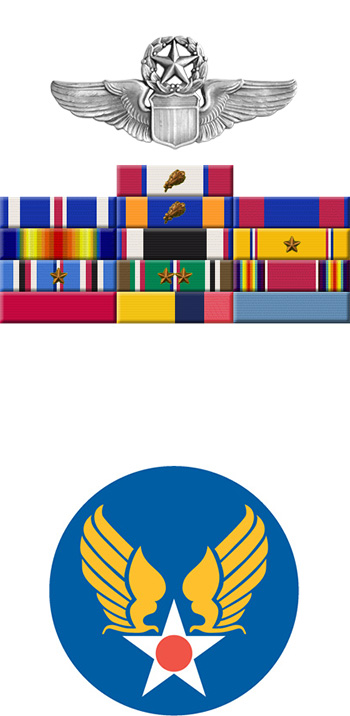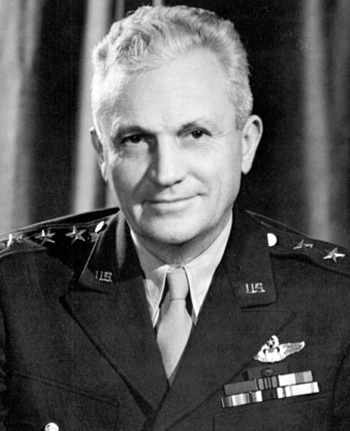
|
Frank M. Andrews |
 |
|||
| Rank, Service | ||||
Lieutenant General, U.S. Army Air Forces |
||||
| Veteran of: | ||||
|
||||
| Tribute: | ||||
Frank Andrews was born on February 3, 1884, in Nashville, Tennessee. He entered the U.S. Military Academy at West Point on July 31, 1902, and graduated with a commission as a 2LT of Cavalry on June 12, 1906. His first assignment was with the 8th Cavalry at Fort William McKinley in the Philippines, where he served from November 1906 to April 1907. Andrews then served at Fort Yellowstone, Wyoming, until November 1908, followed by duty at Fort Huachuca, Arizona, until October 1910. He served at Fort Myer, Virginia, from October to November 1910, and then served as a general's aide at Schofield Barracks, Hawaii, from January 1911 to June 1913. Lt Andrews next served with the 2nd Cavalry at Fort Bliss, Texas, from July to December 1913, and then at Fort Ethan Allen, Vermont, until he transferred to the Aviation Section of the U.S. Army Signal Corps on August 5, 1917. After completing Field Artillery School of Fire at Fort Sill, Oklahoma, Andrews was assigned to the Office of the Chief Signal Officer in Washington, D.C., from September 1917 to April 1918, when he became commander of Rockwell Field on North Island, California. He completed flight school and was awarded his pilot wings in July 1918 and then commanded Carlstrom Field and Dorr Field, Florida, until October 1918. Andrews served as Supervisor of the Southeastern Air Service District in Montgomery, Alabama, from October 1918 to March 1919, and then as Chief of the Inspection Division in the Office of the Director of the Air Service until March 1920. From March to August 1920, he served on the War Plans Division general staff and then went to Germany to serve with the American Army of Occupation, where he served until February 1923. He served in the Office of the Chief of the Air Service from February to June 1923, and then became Executive Officer, Assistant Commandant, and Commandant of the 10th School Group with the Air Service Advanced Flying School at Kelly Field, Texas, where he served until September 1927. Andrews attended Air Corps Tactical School at Langley Field, Virginia, from September 1927 to June 1928, and then attended Command and General Staff School at Fort Leavenworth, Kansas, from July 1928 to June 1929. His next assignment was back in the Office of the Chief of the Air Corps, where he served until August 1932, followed by the Army War College until October 1934. He served on the War Department General Staff from October 1934 until February 1935, when he was selected to command the Army General Headquarters Air Force. Andrews served as Commanding General of the GHQ Air Force until March 1939, and then served as Air Officer of the Eighth Corps Area at Fort Sam Houston, Texas, until July 1939, when he became Assistant Chief of Staff for Operations and Training for the U.S. Army. He became Commander of the Panama Air Force in November 1940, and Commander of the Caribbean Defense Command and the Panama Canal Department in September 1941. Gen Andrews served in this position until November 1942, when he was selected to become Commander of U.S. Forces in the Middle East. In January 1943, Andrews was named the Commander of all U.S. Forces in the European Theater of Operations, but he was soon after killed in the crash of a B-24 Liberator in Iceland on May 3, 1943. His remains were returned to the United States and he was buried at Arlington National Cemetery. Andrews AFB, Maryland, was named in his honor in March 1949. During his Air Force career, Gen Andrews accumulated over 5,800 flying hours and was rated as a Command Pilot and Combat Observer. |
||||
|
||||

